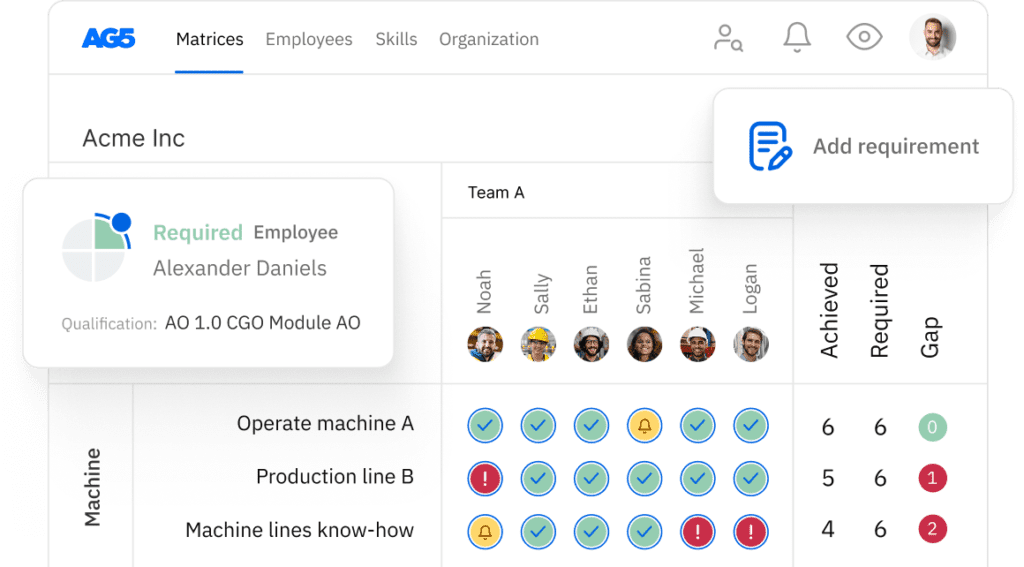Skills matrix software: Complete industry guide
This guide explains what skills matrix software is, how it works, and why it matters for HR, L&D, operations, and compliance leaders who need live skills visibility, faster gap closure, and audit-ready records.
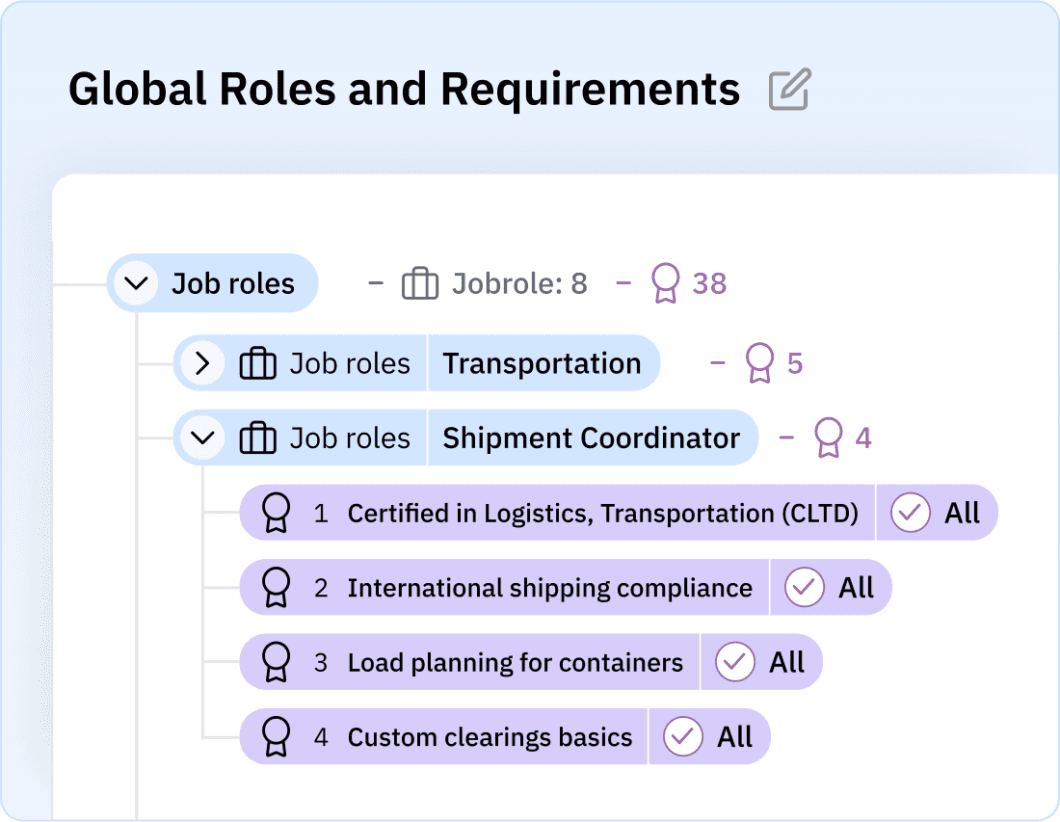
When you’re juggling audits, training deadlines, and shifting role requirements, a static spreadsheet can’t keep up. This guide explains what skills matrix software is, how it works, and why it matters for HR, L&D, operations, and compliance leaders who need live skills visibility, faster gap closure, and audit-ready records.
We’ll anchor definitions in everyday workflows, highlight evaluation criteria, and point you to practical resources along the way so you can move from manual admin to measurable impact.
Top 4 skills matrix softwareCopied
1. AG5 – Best for audit-ready skills visibility at scale
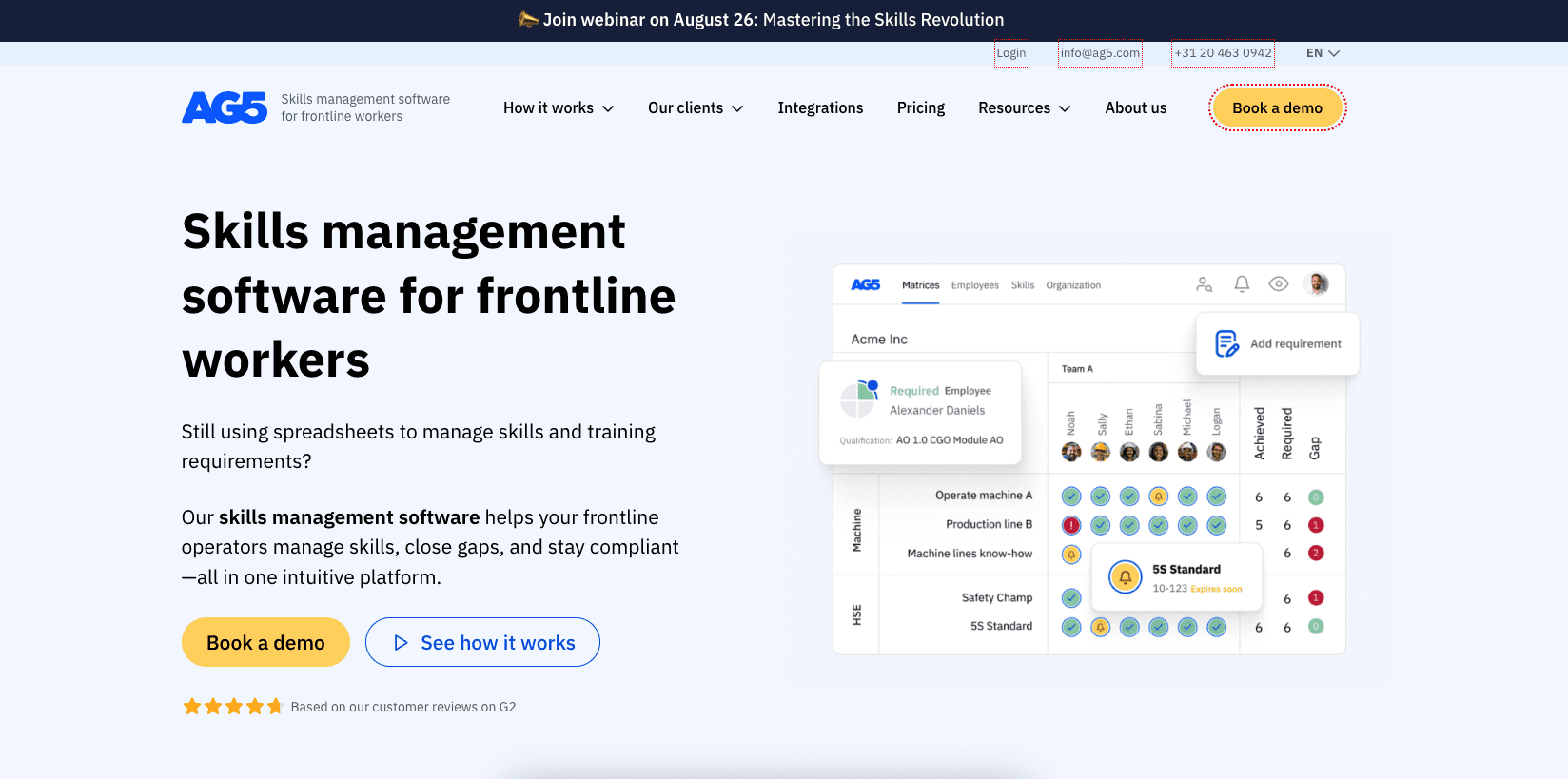
Standout features
- Customizable role–skill libraries and interactive matrices
- Real-time skills tracking dashboards with compliance metrics
- Automated gap analysis and future-needs forecasting
- Certificate management with expiry alerts and audit logs
- HRIS/LMS integrations and SSO
- Mobile access for frontline teams
These capabilities are documented across AG5’s product and docs pages, including skills dashboards, alert lists for expirations, and the Insights Dashboard for compliance tracking.
2. 365Talents
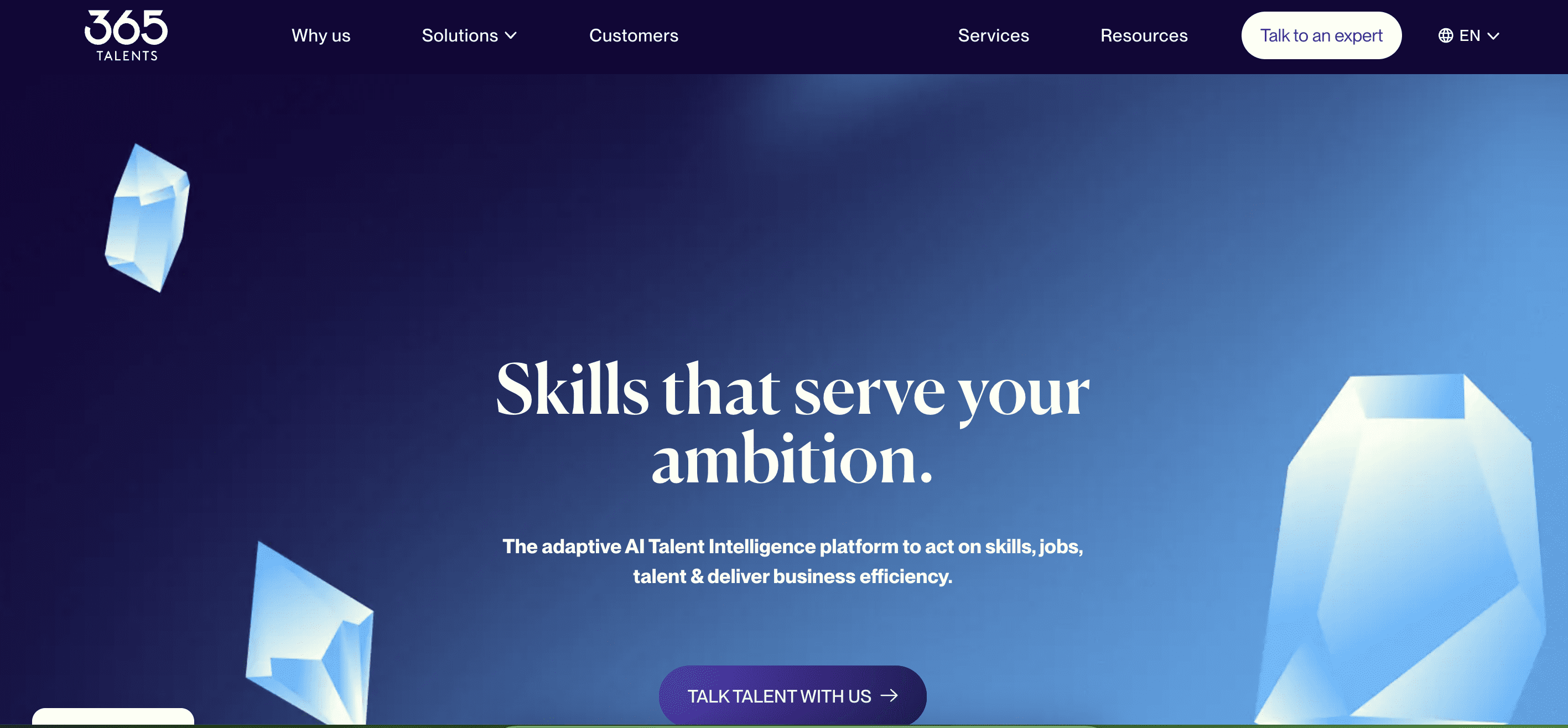
365Talents leverages adaptive AI talent intelligence to transform skills management into a seamless experience.
The platform’s strength lies in its ability to build dynamic skills frameworks in weeks rather than months, while its semantic analysis technology captures and synthesizes skills across multiple languages and terminologies.
Key Features:
- AI-powered skills detection across 45+ languages
- Talent marketplace for internal mobility
- SkillsDrive for rapid skills assessment
- Integration with 100+ HR tools
- Personalized opportunity matching
- Real-time skills framework updates
Best suited for: Global enterprises focused on internal mobility
Pricing: Contact for pricing
3. Cloud Assess – Best for skills + training in regulated environments

Standout features
- Skills & compliance matrix with job-role mapping
- Training matrix, reporting & dashboards
- Expiries & renewals to manage time-sensitive qualifications
- Issue and verify certificates
- SSO and third-party integrations
- Guided import of existing spreadsheets/platform data
Cloud Assess’ feature page details the skills matrix module, compliance views, expiries/renewals, certificate issuing/verification, and integrations.
4. Azumuta – Best for shop-floor skills, OJT, and qualification tracking
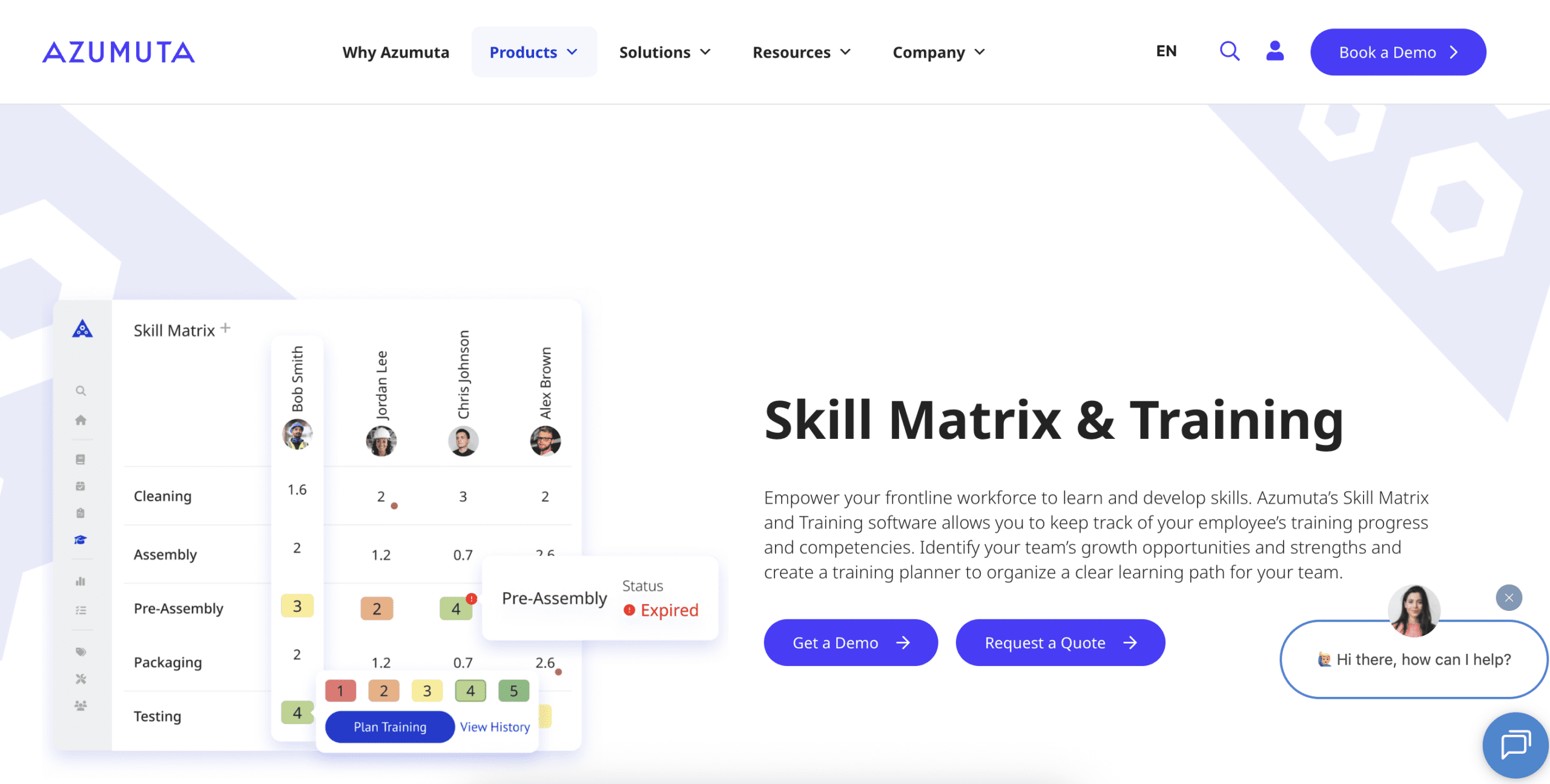 Standout features
Standout features
- Interactive skills matrix with automated skill tracking
- Customizable skill categories and proficiency levels
- On-the-job training plans with assessments and confirmations
- Qualifications module with certificate uploads and expiry notifications
- Dashboards & analytics for skill distribution and progress
- Integrations with popular LMS/HCM systems (e.g., Workday, SAP, Moodle, Cornerstone)
Azumuta’s solution page outlines the skills matrix module, OJT and training paths, qualifications with certificate reminders, analytics, and integrations.
Tip: If you’re shortlisting, pilot with a small unit first. For AG5, you can start from a template and layer in live skills tracking and compliance analytics as you scale.
What is skills matrix software?Copied
Skills matrix software is a digital system that maps roles to competencies and tracks each employee’s proficiency in real time. It flags gaps or expiring qualifications, and links training to close those gaps replacing manual spreadsheets with live, audit-ready data.
A skills matrix is the backbone of workforce planning: it shows who can do what, at what level, and where risk exists.
Software turns that concept into an operational tool with structured role–skill libraries, standardized proficiency scales, and automated assessments. It centralizes evidence like certificates and on-the-job signoffs, issues expiry alerts, and provides dashboards your managers can actually use.
Compared with Excel, you gain version control, mobile input for frontline teams, and integrations that keep records consistent across HRIS and LMS.
If you’re starting from templates, you can import or adapt a skills matrix template and then scale into full skills management software for ongoing skills tracking and compliance.
Core elements you should expect
- Role–skill mapping with proficiency scales
- Self and manager assessments with evidence capture
- Certificate storage with expiry alerts
- Gap detection and training links
- Dashboards and export-ready reports
Spreadsheet vs. software at a glance
| Capability | Spreadsheet matrix | Software-based matrix |
|---|---|---|
| Data freshness | Manual updates, prone to lag | Real-time updates from assessments and integrations |
| Evidence & compliance | Files scattered across drives | Central certificate vault with audit trail |
| Gap visibility | VLOOKUPs and filters | Automated gap flags and expiry alerts |
| Scalability | Breaks with multi-site complexity | Role libraries, permissions, and API integrations |
Helpful starting points
- Learn the mechanics of a skills matrix to set up roles and scales correctly
- Use a skills matrix template to pilot, then migrate to software when the matrix becomes business-critical
How does skills matrix software workCopied
It centralizes a role-skill library, standardizes proficiency scales, and orchestrates assessments and evidence capture. Integrations sync people and training data, while analytics reveal gaps and compliance risks.
Alerts and workflows route actions so you close gaps and stay audit-ready.
Most teams implement a predictable sequence that minimizes admin and maximizes signal quality.
You start by defining roles and the underlying taxonomy of types of skills, then choose a consistent scale for skills proficiency.
Next, you connect your HRIS/LMS to enable continuous skills tracking. From there, assessments capture current levels and attach evidence such as certificates.
Finally, dashboards and alerts expose competency gap analysis outcomes, so managers can assign training and verify closure.
Typical workflow
- Define role–skill templates and proficiency scale
- Import people data and permissions from HRIS
- Run self and manager assessments with evidence capture
- Store certificates and set expiry alerts
- Link gaps to training and monitor dashboards
Component → outcome
| Component | Outcome |
|---|---|
| Role–skill library | Standardized expectations across sites |
| Assessment workflows | Current, auditable proficiency data |
| Alerts & dashboards | Prioritized actions for risk and development |
Do you need skills matrix softwareCopied
If you handle regulated skills, multi-site operations, or frequent audits, software gives you live visibility, reliable evidence, and automated gap closure. When spreadsheets slow staffing, hide expiring certs, or block development planning, it’s time to upgrade.
Teams typically outgrow Excel once complexity and risk rise beyond simple filtering. Tell-tale signs include rising manual effort, inconsistent proficiency scales, and certificate files scattered across inboxes.
A platform for skills management software centralizes role–skill libraries, standardizes competence meaning, and automates competency gap analysis and skills tracking.
If you’re still testing the waters, start with a skills matrix template or this step-by-step skills matrix guide, then scale into software when audits, staffing, or training alignment demand real-time data.
Quick self-test
- You manage 20+ roles or 100+ employees across shifts or sites
- Certificates expire regularly and reminders are easy to miss
- Audits or client assessments occur quarterly or on short notice
- Managers request dashboards, not spreadsheets, for decision-making
- You need to map gaps to courses and verify closure without email chasing
- You’re building internal mobility with an expert-finder capability
Operational signals and risks
| Signal | What you see | Risk it creates |
|---|---|---|
| Expiring certs | Last-minute scrambles before audits | Compliance exposure and failed audits |
| Inconsistent scales | Different teams use different ratings | Unreliable comparisons and biased staffing |
| Slow staffing | Weeks to find qualified coverage | Downtime, overtime, or safety incidents |
| Training misalignment | Courses assigned by guesswork | Wasted budget and unchanged proficiency |
| Siloed evidence | PDFs in shared drives or email | Missing proof and rework during audits |
What features should you prioritizeCopied
Prioritize a robust role-skill library, standardized proficiency scales, evidence-backed assessments, certificate expiry alerts, gap analytics tied to training, strong integrations, mobile data capture, and audit-grade reporting. These capabilities enable reliable skills tracking at scale.
Selecting software is simpler when you map features to real outcomes. Start with governance: you need a controllable role–skill taxonomy and consistent proficiency scales to compare teams fairly.
Insist on assessment workflows that attach evidence, plus a certificate vault with automated expiry alerts to prevent last-minute scrambles. Analytics should surface competency gap analysis and recommend training pathways, ideally via LMS integrations, to accelerate competency development.
For operations, mobile capture (photos, sign-offs) and an expert-finder accelerate staffing decisions. Finally, confirm enterprise needs – permissions, SSO, audit logs, ISO-certified security – and exportable dashboards your managers will actually use.
If you are piloting, begin with a skills matrix template, then graduate to full skills management software once complexity rises.
Feature checklist → why it matters
- Role–skill library and taxonomy control → consistent standards across sites
- Flexible proficiency scales → fair comparisons and growth tracking
- Self and manager assessments with evidence → auditable proficiency records
- Certificate management with alerts → fewer compliance lapses
- Gap analytics and forecasting → proactive staffing and training alignment
- LMS/HRIS integrations → less manual admin and fresher data
- Expert-finder search → faster resourcing and mentoring matches
- Role-based permissions and SSO → enterprise governance and security
- Dashboards and scheduled reports → decisions without spreadsheet work
Feature → requirement → benefit
| Feature | Technical requirement | Benefit |
|---|---|---|
| Certificate vault & alerts | Secure storage, reminder engine | Audit readiness and fewer expired certs |
| Gap analytics | Rules engine, data model for levels | Clear priorities for training spend |
| LMS integration | APIs, course mapping | Automatic assignments and proof of completion |
| Mobile capture | iOS/Android app, offline mode | Real-time updates from frontline teams |
| Audit logs | Immutable change history | Traceability for regulators and clients |
How to implement skills matrix softwareCopied
Start with a clean role-skill taxonomy and a consistent proficiency scale, pilot with one high-impact team, then integrate HRIS/LMS data, formalize assessments and evidence capture, and operationalize dashboards, alerts, and training links for continuous skills tracking and compliance.
Implementation works best as a phased program with strong governance and quick wins. Define your roles and core types of skills, then lock a single scale for skills proficiency.
Import people data from the HRIS, map required skills to each role, and migrate any existing skills matrix template content. Run self and manager assessments with evidence, centralize certificates, and switch on expiry alerts.
Use competency gap analysis to prioritize training, ideally linked directly to courses. Finally, publish dashboards and schedule reports, so managers act without spreadsheets.
If you’re new to matrices, begin with how to create a skills matrix, then scale into full skills management software for multi-site operations.
Phased blueprint
| Phase | Actions | Outputs |
|---|---|---|
| Governance | Approve role–skill taxonomy and proficiency scale | Standardized definitions and rating rules |
| Data setup | Import employees, org units, permissions | Clean people data and access control |
| Pilot | Assess 1–2 teams, attach evidence, tidy gaps | Validated matrix and quick wins |
| Integrations | Connect HRIS/LMS, map courses to skills | Live roster updates and training assignments |
| Scale-up | Roll to sites, enable expert-finder, schedule reports | Consistent coverage and faster staffing |
| Improve | Forecast gaps, track outcomes, iterate | Measurable competency development and audit readiness |
Do this first
- Freeze a single proficiency scale before assessments
- Centralize certificates with expiry alerts to stop last-minute scrambles
- Publish a short “how we rate skills” guide to reduce bias
Avoid this
- Letting each team invent its own scales
- Migrating messy spreadsheets without cleaning role–skill mappings
- Waiting to integrate HRIS/LMS until after rollout
Conclusion
Skills matrix software turns static skill lists into operational intelligence. With standardized definitions, evidence-backed assessments, and automated alerts, you’ll close gaps faster, staff safely, pass audits, and give employees clearer development paths.
When audits can appear with little notice and production or service quality hinges on the right skills at the right time, spreadsheets become a bottleneck.
A platform approach gives you reliable data, consistent scales, and a certificate vault with traceability. Managers see risks early, assign targeted training, and verify closure – without manual hunting.
If you’re evaluating options, start by aligning on your role–skill taxonomy, test with a pilot using a skills matrix template, and then operationalize with enterprise-grade skills management software that supports assessments, competency gap analysis, and continuous skills tracking.
That’s how you move from reactive admin to measurable workforce readiness.
FAQs Copied
-
What’s the difference between a skills matrix and a competency framework?
-
How is skills matrix software different from an HRIS or LMS?
-
How often should we reassess proficiency levels?
-
Which proficiency scale should we use?
-
How do we manage certificates and compliance evidence?
-
Can we import our existing spreadsheets?
-
What metrics should we track to prove ROI?
-
How do we start small without stalling the program?
Author Copied
Revisions Copied
Written by: Rick van Echtelt
Copy edited by: Adam Kohut

